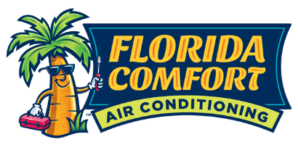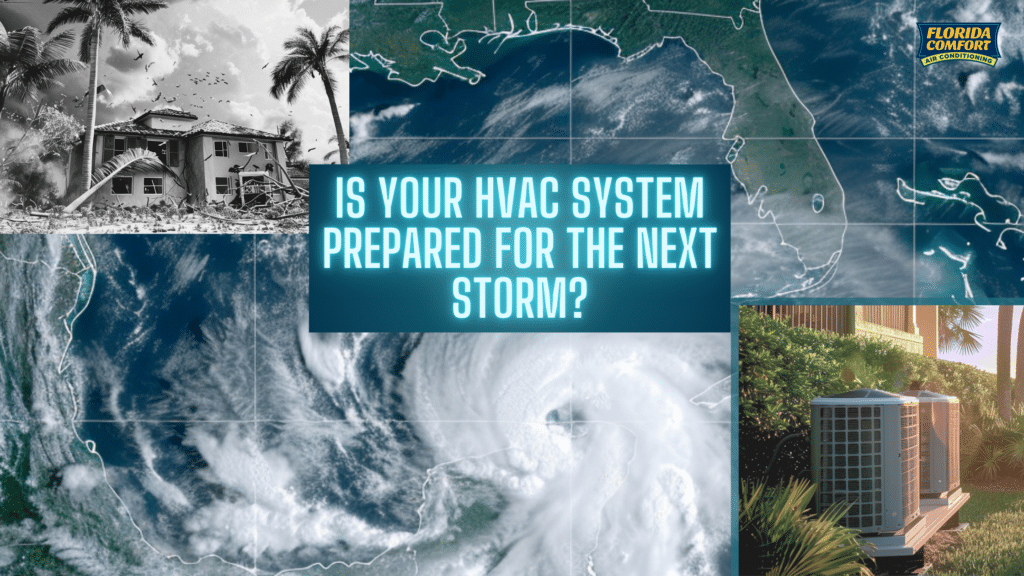As hurricane season approaches in Southwest Florida, it’s essential to ensure that your home is ready for severe weather, and this includes your HVAC system. A hurricane can bring strong winds, heavy rain, and flooding, which can all damage your air conditioning unit if it’s not properly prepared. To help you safeguard your investment, we’ve compiled a hurricane preparedness list that includes the best tips for how to protect your AC before, during, and after a storm.
By following these steps, you can prevent costly repairs and ensure your system is up and running once the storm has passed.
Turn Off Your AC System Before the Storm Hits
The first item on your hurricane preparedness list should be to turn off your air conditioning system before the storm arrives. During a hurricane, power surges, lightning strikes, and flying debris can cause significant damage if your AC unit is left running.
- Turn off the air conditioner at the thermostat: This prevents your system from operating in dangerous conditions and helps avoid damage from power fluctuations.
- Shut off the breaker to the AC system: Cutting the power entirely reduces the risk of electrical damage caused by power surges or lightning.
Turning off your AC system is a crucial step in learning how to protect your AC during a hurricane, ensuring that it stays safe from electrical malfunctions.
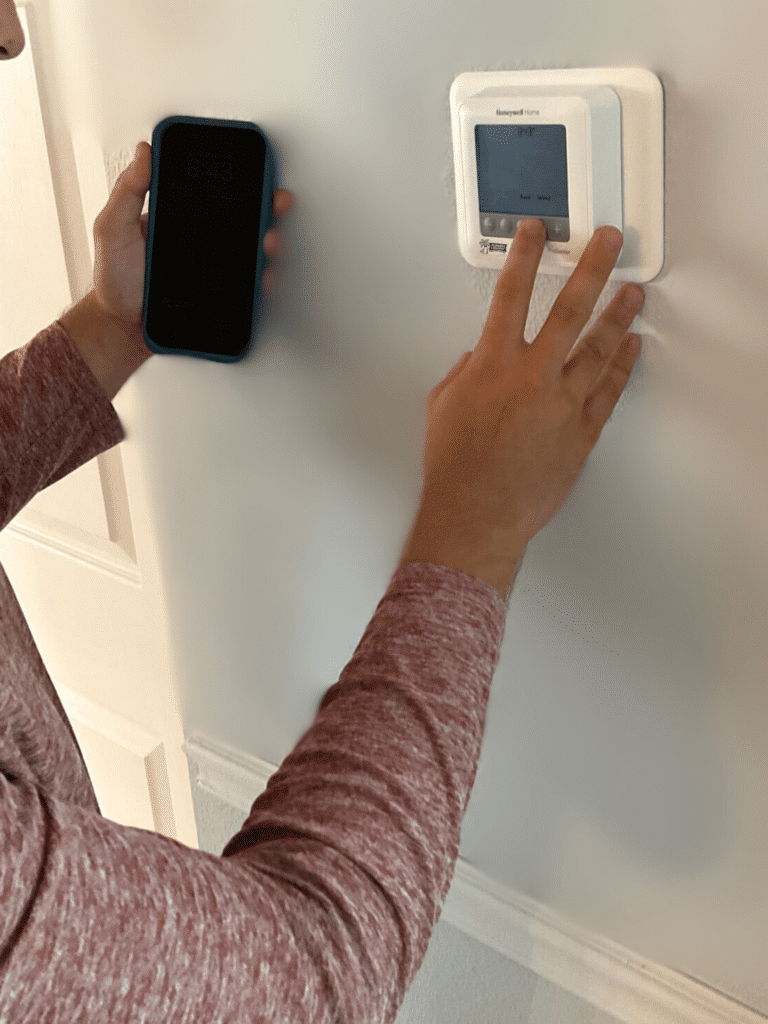
Secure the Outdoor Unit
Securing the outdoor unit is a key part of any hurricane preparedness list. The exterior part of your AC system is highly vulnerable to flying debris, strong winds, and flooding. Here are some ways to keep it safe:
- Use a weatherproof cover: Cover the outdoor unit with a tarp to protect it from dirt, debris, and potential damage from flying objects. Be sure to remove the cover after the storm to prevent moisture buildup, which can lead to rust or mold.
- Anchor the unit with hurricane straps: High winds can easily shift or lift your AC unit if it isn’t properly secured. Use hurricane straps or heavy-duty bolts to anchor it to the ground.
- Clear the surrounding area: Remove or secure any outdoor furniture, toys, or loose items that could become projectiles during high winds and damage the unit.
Taking these precautions will go a long way in helping you understand how to protect your AC and avoid expensive repairs after the storm.
Elevate the Unit to Prevent Flooding
In areas prone to flooding, such as Southwest Florida, protecting your AC system from water damage is critical. Flooding can severely affect your outdoor unit and lead to costly repairs.
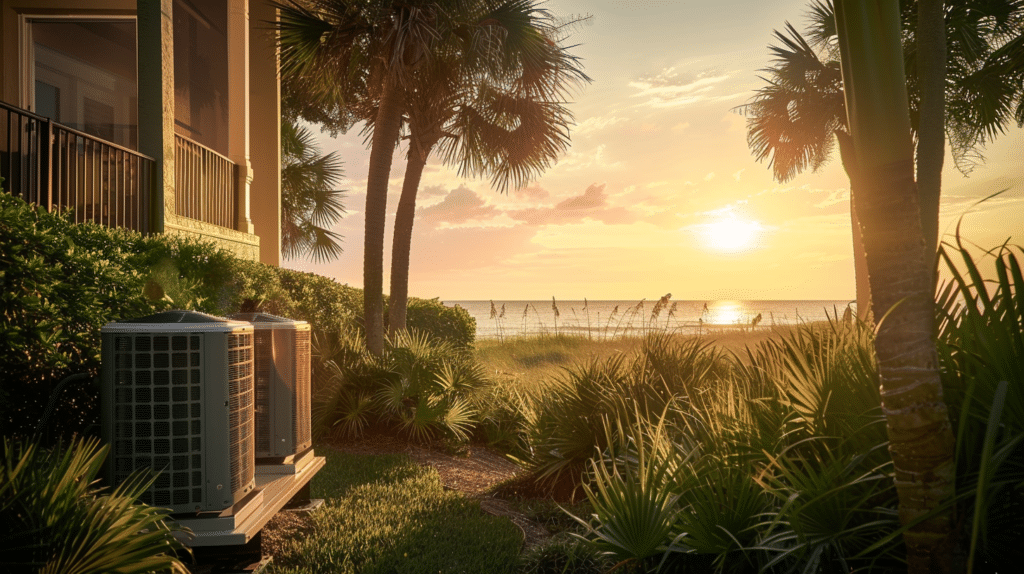
Here’s how to add this step to your hurricane preparedness list:
- Raise the unit on a platform: Elevating your outdoor unit a few inches or feet off the ground can protect it from standing water during a storm. This is especially important in flood-prone areas.
- Install a flood barrier: Flood barriers can provide an additional layer of protection by preventing water from reaching the outdoor unit, safeguarding the electrical components inside.
Elevating your AC system is a proactive way to reduce the risk of water damage and learn how to protect your AC from flooding during a hurricane.
Install a Surge Protector
Hurricanes often cause power surges, either from lightning strikes or power grid issues. These surges can damage the sensitive components of your HVAC system, resulting in costly repairs or even complete system failure. To avoid this, consider installing a surge protector.
- Whole-house surge protectors: These protect all of your home’s appliances, including your AC unit, from damaging power surges.
- HVAC-specific surge protectors: These devices are designed to protect just your air conditioning system, preventing issues like fried compressors and blown capacitors.
Adding surge protection to your hurricane preparedness list is a smart move to shield your AC system from electrical damage.
Schedule a Pre-Hurricane Maintenance Check
Before a hurricane strikes, it’s a good idea to have a professional HVAC technician inspect your system. Regular maintenance is essential for ensuring your system operates efficiently, but it also helps to identify any potential issues that could worsen during a storm. Here’s what a technician will do during a pre-hurricane checkup:
- Inspect the outdoor unit for loose components: The technician will make sure there are no parts that could become dislodged during high winds.
- Check electrical connections: Ensuring your system’s electrical components are secure will help it withstand any power surges or outages during the storm.
- Clean the condenser and evaporator coils: Dirty coils make your AC work harder, which can reduce efficiency if you need to run it again after the storm.
Having a professional inspect your system before a hurricane is essential in understanding how to protect your AC and reducing the risk of breakdowns after the storm.
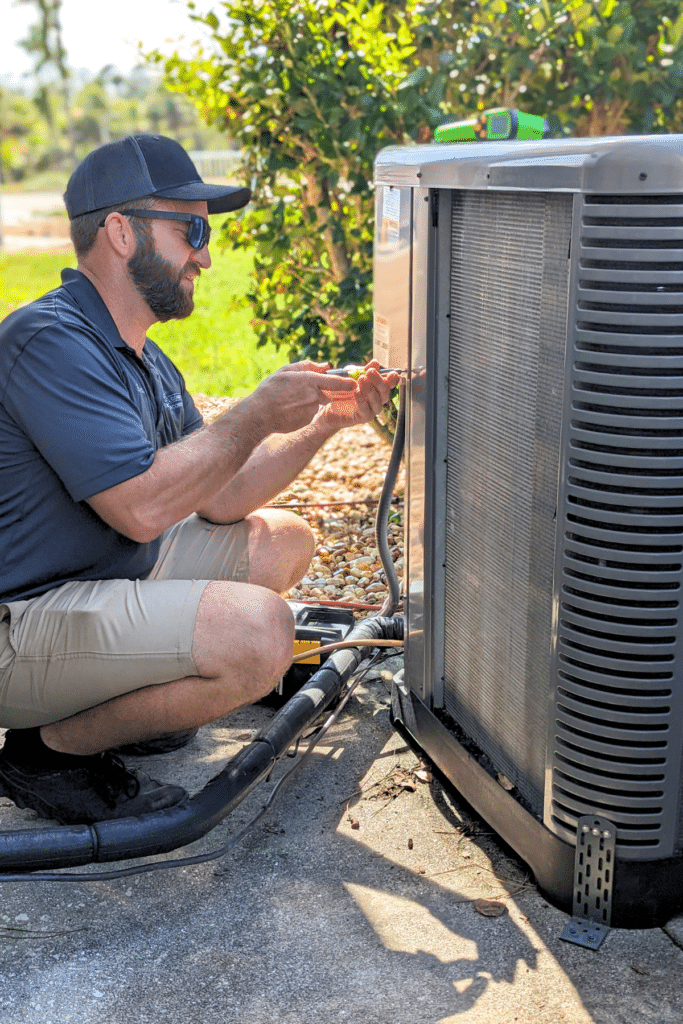
Post-Hurricane Inspection and Repair
Once the hurricane has passed, it’s important to inspect your AC system for any damage before turning it back on. Here are some things to look for:
- Check for debris: If leaves, branches, or dirt have accumulated inside or around the outdoor unit, call a technician to clean it out and check for hidden damage.
- Look for unusual noises or performance issues: If your AC is making strange sounds or not cooling as effectively as before, it may have sustained damage that requires professional attention.
- Inspect for water damage: If the area around your unit was flooded, it’s best to have a technician inspect the system for any signs of water damage before turning it back on.
Adding post-hurricane inspection to your hurricane preparedness list helps ensure that your system is functioning properly and can prevent more extensive damage in the long run.
